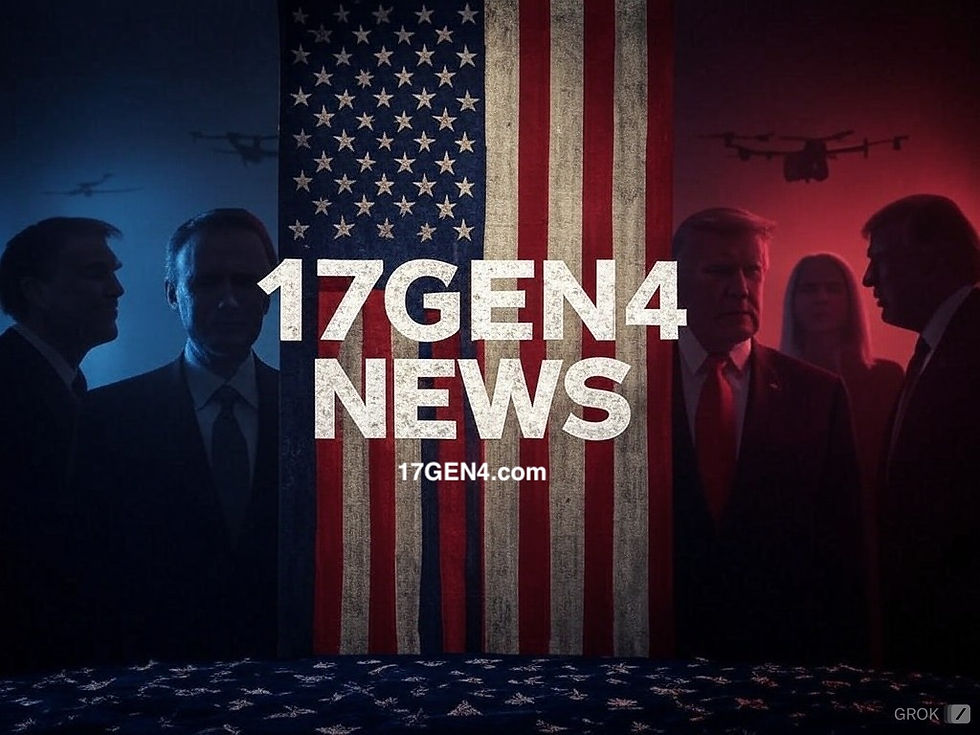Chinese Embassy Highlights Reagan’s 1987 Tariff Speech Amid U.S.-China Trade Talks
- 17GEN4

- Apr 7
- 3 min read
Washington, D.C. – On April 7, 2025, the Chinese Embassy in the United States took to social media to share a video clip of a 1987 speech by former President Ronald Reagan, in which he warned of the detrimental effects of tariffs on economic prosperity. The move comes as trade discussions between the U.S. and China continue to dominate international headlines, with Reagan’s words being positioned as a historical counterpoint to current U.S. trade policies.
The video, originally from a radio address delivered on April 24, 1987, captures Reagan articulating his staunch support for free trade and his concerns about protectionist measures. “High tariffs inevitably lead to retaliation by foreign countries and the triggering of fierce trade wars,” Reagan stated, referencing the economic fallout from the Smoot-Hawley Tariff during the Great Depression. He argued that such barriers stifle competition, raise prices for consumers, and ultimately harm American workers and industries. The full speech, archived by the Ronald Reagan Presidential Library, underscores his belief that “the freer the flow of world trade, the stronger the tides of human progress and peace among nations” (Reagan, “Radio Address to the Nation on Free and Fair Trade,” April 24, 1987, www.reaganlibrary.gov).
The Chinese Embassy’s decision to spotlight this speech was not accompanied by an official statement, but posts on X suggest it is a pointed response to recent U.S. tariff policies. Mao Ning, a spokesperson for China’s Ministry of Foreign Affairs, shared the clip on her X account, where it quickly gained traction. One X user,
@LeanGreenAZ, noted, “The Chinese Embassy has just posted an archived clip of President Ronald Reagan’s 1987 speech denouncing tariffs. ,” reflecting the surprise and intrigue sparked by the embassy’s move (X post, April 7, 2025, 10:54 PDT).
Reagan’s 1987 address was delivered in the context of his administration’s efforts to balance free trade advocacy with targeted responses to unfair trade practices. That year, he imposed a 100 percent tariff on certain Japanese electronics in retaliation for Japan’s failure to honor a semiconductor trade agreement—a decision he framed as an exception rather than a rule.
“Our commitment to free trade is also a commitment to fair trade,” Reagan emphasized, distancing his actions from broader protectionism (Reagan, “Radio Address to the Nation on Free and Fair Trade,” April 24, 1987, www.reaganlibrary.gov). Historians note that Reagan’s broader legacy includes launching the Uruguay Round of trade negotiations in 1986, which paved the way for the World Trade Organization, and securing the U.S.-Canada Free Trade Agreement in 1988 (Cato Institute, “Reagan Embraced Free Trade and Immigration,” June 23, 2004, www.cato.org).
The embassy’s sharing of the video aligns with China’s ongoing critiquechild narrative as a critique of current U.S. trade policies under President Donald Trump, who has reimposed tariffs on Chinese goods. The Trump administration’s reciprocal tariffs, set to take effect on April 2, 2025, have been labeled “Liberation Day” by Trump, who argues they will reduce U.S. reliance on foreign goods. However, economists and critics warn that these measures could echo the economic disruptions Reagan cautioned against, raising costs for American consumers and risking retaliatory trade barriers from China and other nations (WIONews, “Another Great Depression? Ronald Reagan’s ominous 1987 speech on tariffs resurfaces,” April 1, 2025, www.wionews.com).
Experts see the embassy’s move as a strategic reminder of Reagan’s warnings amid escalating U.S.-China tensions. “Reagan’s speech resonates today because it highlights the long-term consequences of trade wars—something both sides should consider,” said Dr. Ellen Frost, a senior trade policy advisor at the East-West Center. As negotiations continue, the video serves as a historical lens through which to view the stakes of today’s trade policies, blending past lessons with present challenges. 17GEN4.com


Comments